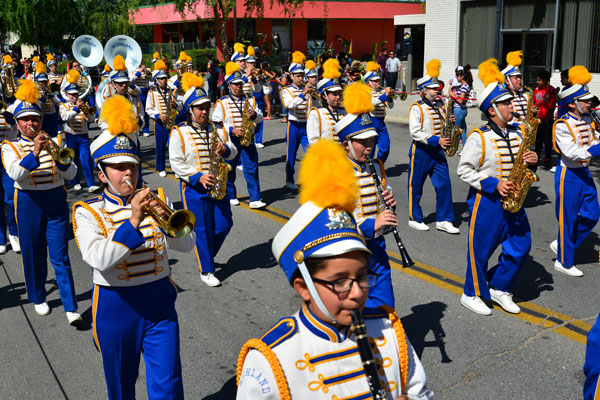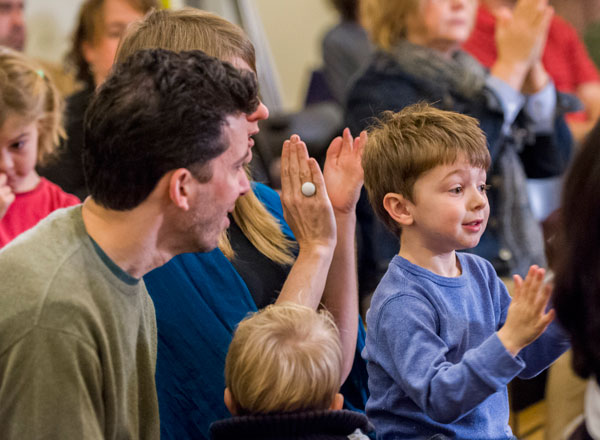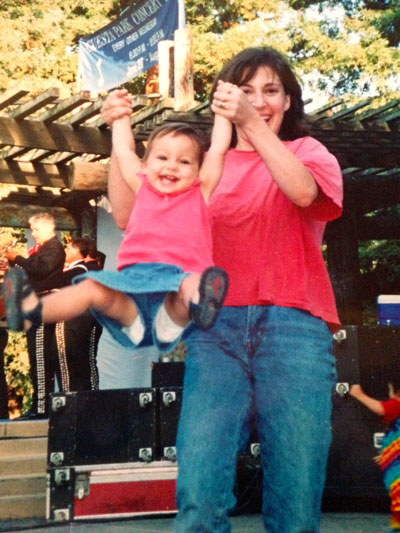The Value-added of Live Music Experiences
Who doesn’t love a parade? The pomp and circumstance of the music passing by is a thrill to witness at any age! In fact, live music events of all kinds are delightful. And the benefits for children extend beyond the entertainment value—attending also supports music-learning. “There is no doubt that going to live concerts is an important part of experiencing music and, therefore, of music development,” says Ken Guilmartin, Music Together Founder/Artistic Director.

Performers don’t have to be professionals to make an impact, either. Music Together CEO Susan Darrow remembers taking her son David to a local high school jazz band concert when he was six. “He was completely transfixed,” she recalls. “On the way home, he told me that his ‘mission in life’ was to make the jazz band when he got to high school. That event had a lasting, profound effect on him . . . and, P.S., he did make the jazz band!”
You might not have thought about taking your child to a high school or middle school concert, but what a great idea! Older kids can be inspiring musical role models for younger children; they certainly had an impact on Susan’s six-year-old. Though there were surely some mistakes in that concert, David was riveted by things beyond the performers’ technical proficiency, such as their focus, passion, and teamwork.
It’s also likely that David was so inspired because he was already familiar with music—singing and playing with music was part of everyday life in his family. Similarly, your Music Together experience is uniquely nurturing your child’s music development. Along with your musical role-modeling, regular music-making opportunities help your son or daughter “tune in” to music much as they tune in to language. Their awareness, attention, and engagement with music is becoming heightened, and they can more easily connect with new music encounters, like the marching band at a parade or performers at a concert.

Even though the acoustic experience at a concert is quite different than it is in class, you may notice that your child has a longer attention span at a performance than you’d expected. That’s because, as Ken says, children who have taken Music Together “are better able to follow the musical events as they unfold.” Their in-class and at-home experiences with active music-making are helping them to become better listeners. And since they are already used to using all of their senses to actively experience music, they are better able to relate to the music and performers, even in a brand new setting. In fact, some Music Together parents, themselves engrossed in a show, reported both dismay and delight to discover that their four-year-old had suddenly appeared on stage, ready to play along! It’s quite a different experience for young children who have listened only to recorded music.
 The next time you and your child go to see live music, you can enhance the learning by providing some active support for their musical responses, just as you or your child’s teacher might do during class or when playing musically at home. If you notice your child is moving or sounding in response to the music, give them a mirror by doing it back. You can also gently tap the beat on their back or show them the beat in your own body. It’s that simple. Most importantly, enjoy the concert yourself, knowing that you are sharing a special musical moment with your child. And notice how your child continues to process the concert experience through their play and their conversations with you, sometimes for weeks afterwards!
The next time you and your child go to see live music, you can enhance the learning by providing some active support for their musical responses, just as you or your child’s teacher might do during class or when playing musically at home. If you notice your child is moving or sounding in response to the music, give them a mirror by doing it back. You can also gently tap the beat on their back or show them the beat in your own body. It’s that simple. Most importantly, enjoy the concert yourself, knowing that you are sharing a special musical moment with your child. And notice how your child continues to process the concert experience through their play and their conversations with you, sometimes for weeks afterwards!
Although performances are not a replacement for the kind of cumulative music-learning children get in Music Together, live music experiences are an important addition to their music education. Your experience with Music Together has already taught you to think outside the “children’s music” box. You now know that all kinds of music are good for children, including the music you love. You may be surprised at the diversity of places to find concerts appropriate for young children, including some that aren’t always advertised to families.
Check out our suggestions below for inspiration. You’ll be bringing even more music fun into your family’s life!
| Music Together’s Family-Friendly Live Music Guide |
|
It’s easy to find a variety of family-friendly, inexpensive (or even free) concerts to add to your calendar; you just need to know where to look. Your child will likely respond to the music just as they do in Music Together class, so choose a venue that supports children being children (i.e., not a formal concert environment where the audience is expected to sit still and listen silently).
|
—Devi Borton, M.A., is a Certified Music Together Teacher Trainer and Center Director of FAM JAM! Music Together in Santa Fe, New Mexico.



